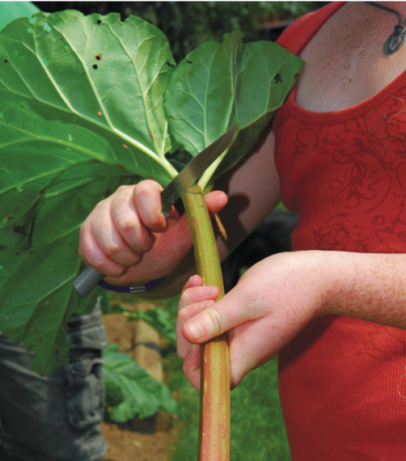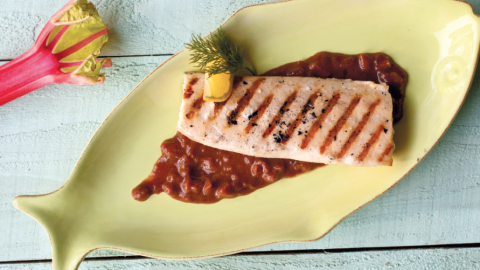A Savory Side to Rhubarb
The one crop that I truly long for each spring is rhubarb. Asparagus and dandelion greens have their place in my heart, but I just love straight-up rhubarb pie and some grilled pork with rhubarb chutney. This most-emblematic plant of spring has more of a tradition in the British Isles and the American Midwest, because it prospers in places that experience an annual hard freeze. I made a point to enjoy stewed rhubarb over vanilla ice cream at St John's in London last year, but I just can't seem to find anyone around here growing the stuff.
Rhubarb originated in Mongolia, and is now grown throughout Europe and the Americas. The ribbed stalks look like red celery and are technically a vegetable, although it is used culinarily as a fruit. Rhubarb's leaves are abundant in oxalic acid, which is toxic in large quantities, so the leaves are often removed before the stalks come to market. Rhubarb is most commonly combined with strawberries to produce pies and cobblers, primarily because strawberries become one-dimensionally sweet when cooked and benefit from the tart balance that rhubarb provides.
I love meeting farmers and learning more about their produce, their travails, and their successes. I endeavor to share those stories because I believe food tastes better when we know about its journey to the plate. Last year, I located a handful of rhubarb from Shirley Broome, who sells flowers and such at the Greensboro Curb Market. The variety that she grew is Victoria, her agriculture extension agent, Wick Wickliffe advised her on caring for it. The productive life for plants is from five to eight years and Shirley's are nearing the end of that span. She isn't expecting much of a harvest this spring, even though this past winter was ideal for her plants. Meanwhile, farming friends Brian and Connie at Missing Willow Farm, at a higher elevation in Patrick County, Virginia, told me their plants didn't make it through the summer.
I will continue to meet new farmers and ask them about growing the crops I can't find. The local food movement is maturing in the Piedmont, new farmers have begun branching out from tomatoes and squash and other backyard crops. They are looking to stand out in their markets, to de-commoditize what they grow. I will continue to meet new farmers and ask them about growing the crops I can't find around here. Hope springs eternal.







